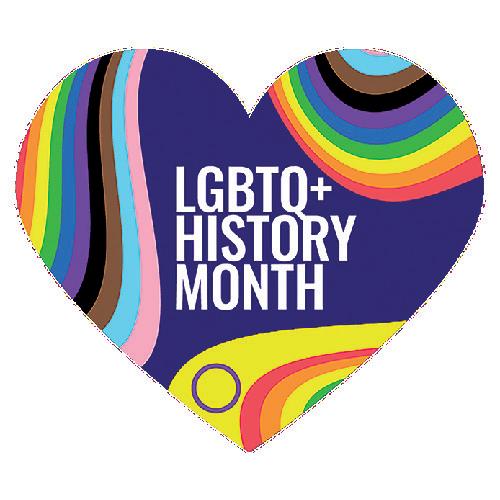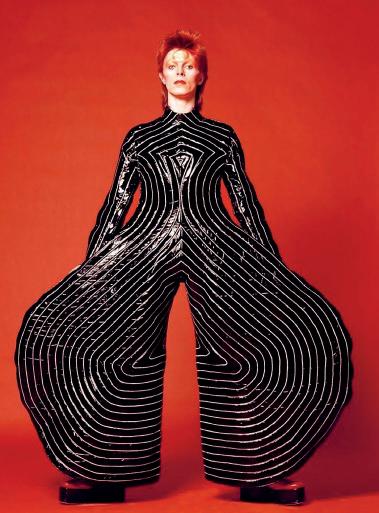
5 minute read
MUSIC
by Exeposé
greatly exaggerated"
Music writers give their ardent defence of the album as a music format
Advertisement
WHILE singles and EPs often tend to be more successful, there is something undeniably beautiful about the form of an album. I view the album form quite like how you would see a book. Though there are separate chapters (songs), they all function together to create a collective whole (the album).
Though they can be understood and perceived separately in their meanings, songs hold a greater meaning in their collective whole. Take for instance Adele’s 2011 album 21 — in exploring heartbreak, the album format enables her to explore the anger, loss, and grief at her relationship’s end. From ‘Rumour Has It’ to ‘Set Fire to the Rain’, this incredible emotional range is something an artist would find impossible to capture in a single song.
SONGS HOLD A GREATER MEANING IN THEIR COLLECTIVE WHOLE
In recent years, we are left to question whether this musical form is slowly dying, and whether we are near to an age of exclusively EPs and singles. It is often suggested that the reasoning behind this shift is due to the increased popularity of stream- ing. This is evident through reports of growing numbers of monthly users, with reported figures of 32 to 39 million between 2019-2021. Though the artists we choose to listen to are paid as ‘rights holders’ they are more often than not paid pitiful amounts per stream. We need to consider the importance of still purchasing music in CD and Vinyl format, as this often provides more support to the artist directly.

I would argue the more personal form of the album will continue to encourage musicians to engage with it — and as far as they prioritise (and are able to) look at purpose above profit, the album form is more than certainly here to stay. Now, like most others, I will continue to listen to extensive hours of Spotify, but in this changing time, I will also contin ue (and encourage others) to buy CDs and listen to the story of an album.
Anabel Costa-Ferreira, Comment Editor
IS there any greater excitement than the countdown to midnight to listen to a new album from your favourite artist — or, if you’re lucky enough, the hope that the pre-ordered physical copy might drop through your letter box a few days early? Unlike singles or EPs, albums can tell us stories, and for 40 minutes or so transport us into outer space, rural America, or anywhere in between. My favourite album of all time, The Killers’ Pressure Machine , epitomises the ability of albums to create stories. In 50 minutes, it paints a portrait of lead singer Brandon Flowers’ life in Utah, spanning drug addiction, homophobia, and cooking eggs in bacon grease. I can listen to the songs on their own in playlists, but nothing matches listening in full to a well-made album. As an album diehard, I always implore my friends to listen to al-
Pushing the boundaries
Lisette Reed discusses music's history of pushing the boundaries of sexuality and gender
SINCE its beginning, the music industry has been utilised as a form of liberation in its ability to push the boundaries of gender conformities and sexuality. Whether artists have employed its significance to make a social commentary, for example Queen’s 'I Want to Break Free' music video, or to express themselves and their identities, the music industry has always been a tool to defy, and even break, social boundaries, whilst shooting LGBTQ+ musicians into stardom. The beauty of music allows self-expression in any form, whether through music videos, lyrics or just an artist’s distinctive look. This is why the industry has been adopted by many LGBTQ+ creatives; there are no limits.
Throughout history, some of the most iconic and talented musicians have been part of the LGBTQ+ community, and/or have been renowned for their defiance of gen der traditions and heteronormative boundaries. With the likes of Prince, David Bowie and Freddie Mercury dominating the charts in the 70s and 80s, their songs boost ed LGBTQ+ representations in main stream media, whilst also encouraging a newfound resistance to societal limitations.
Though Prince, best known for his songs 'Purple Rain' and 'Raspberry Beret', never confirmed any of the rumours regarding his sexuality, his androgynous fashion sense and his fluidity to the gender-bias of style highlights his defiance. Despite many of his contemporaries, including George Michael, experimenting with their fashion styles and incorporating more traditionally feminine pieces into their outfits, Prince’s originality stemmed from the iconic elements of his style, including ruffles and pearls, quintessential to any Prince look. His combination of typically masculine suits and feminine jewellery and lace, paired with eyeliner, pushed the boundaries of gender.
As well as this, Prince’s poetic lyrics encapsulate his disregard of the masculine binary — there's a strong sensitivity in each line, and the layers behind these distinguish the lack of conformity needed when it comes to love. Prince’s style was joined by David Bowie, with his eccentric fashion sense and his persona Ziggy Stardust; Bowie’s authentic sounds mixed with his iconic looks influenced the future of the music industry, with many subsequent artists taking inspiration from him.

With musicians of the 70s and 80s paving the way for LGBTQ+ creatives now, the music industry’s inclusivity has expanded in many ways, allowing queer artists from all backgrounds to tell their own stories. One of the most popular and flamboyant artists at the moment is Sam Smith. The nonbinary singer began their career in 2014, but their most recent album Gloria combines the fluidity and freedom of their sexuality with many soulful tunes. In Smith’s own words, it’s about “emotional, sexual, and spiritual liberation.” bums, rather than just sticking a playlist on shuffle. A good album is not just a collection of good songs — it delivers a cohesive package of instrumentals and lyrics to make you feel something, and provide a message for the listener. Coldplay’s Viva La Vida or Death And All His Friends makes me want to storm the Bastille. Florence + The Machine’s Dance Fever makes me want to join Florence’s cult. George Ezra’s Staying at Tamara’s makes me want to have some cocktails in the sun. Although more artists may shift towards singles and EPs, the album is far from dead. Indeed, the last few years have seen some incredible albums released that still capture popular attention and imagination: The 1975’s Being Funny in a Foreign Language, Olivia Rodrigo’s SOUR , and some I have already mentioned. Shorter and longer forms of music artistry can co-exist, much like how TikTok and YouTube can; each has a different purpose, albeit using the same media format. Irrespective of how streaming changes the industry, albums are here to stay — and this can only be a good thing.
The most popular track on the album, ‘Unholy’, features transgender icon Kim Petras. The song’s music video features the two starring in a cabaret show, exposing a cheating husband. The glitz and glamour of the video is incorporated into a kaleidoscope of sexuality and gender fluidity — there are no rules, and it is abundantly clear why the song is so successful. With music like this becoming a major part of mainstream media, music is helping to gradually break down the stigmatisation of sexuality and gender, allowing self-expression and more relatable representations to be portrayed.
Harry Craig, Music Editor
New Release Radar
This Is Why Paramore
Released: 10 February 2023
Five and a half years since their last album, After Laughter, Paramore finally made their long-awaited return earlier this month with their sixth studio album, This Is Why

It has been met with widespread critical acclaim, including a five-star review from NME, and it is certainly easy to see why, as it is arguably the best release of 2023 so far.
Hayley Williams and co. fuse their classic post-punk sound with classical rock influences; the album's tracks are driven by lively guitar and drums. There is an incredible range of sounds, from soaring dance tracks like title track and lead single 'This Is Why', to slower, mature songs like 'Crave'.
Top Tracks: 'This Is Why'; 'Running Out Of Time'; 'C'est Comme Ça'
Harry Craig, Music Editor










